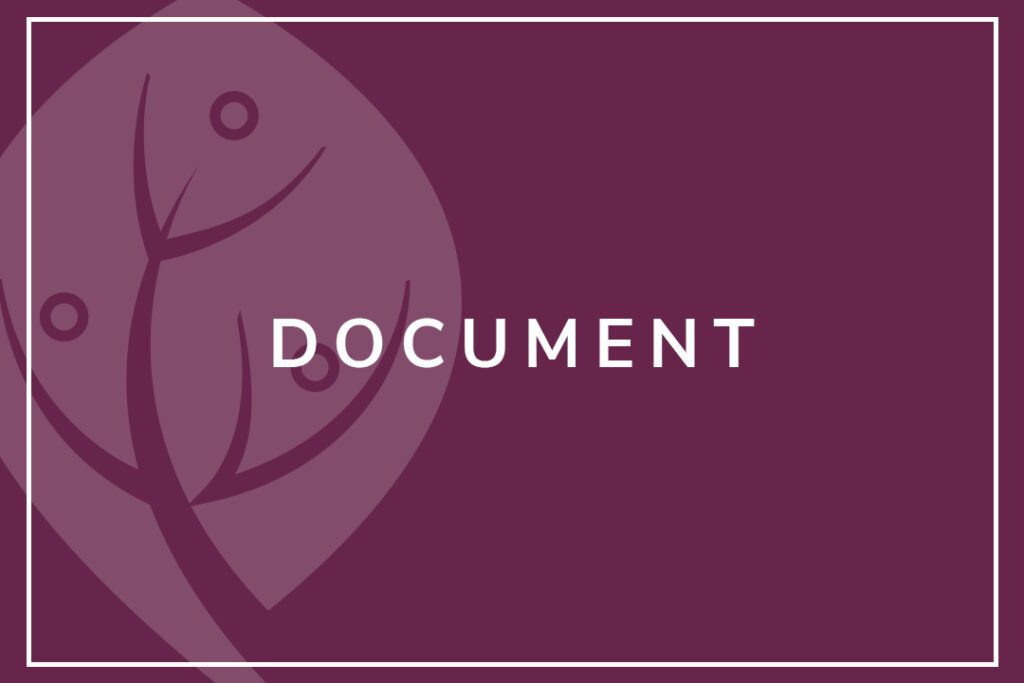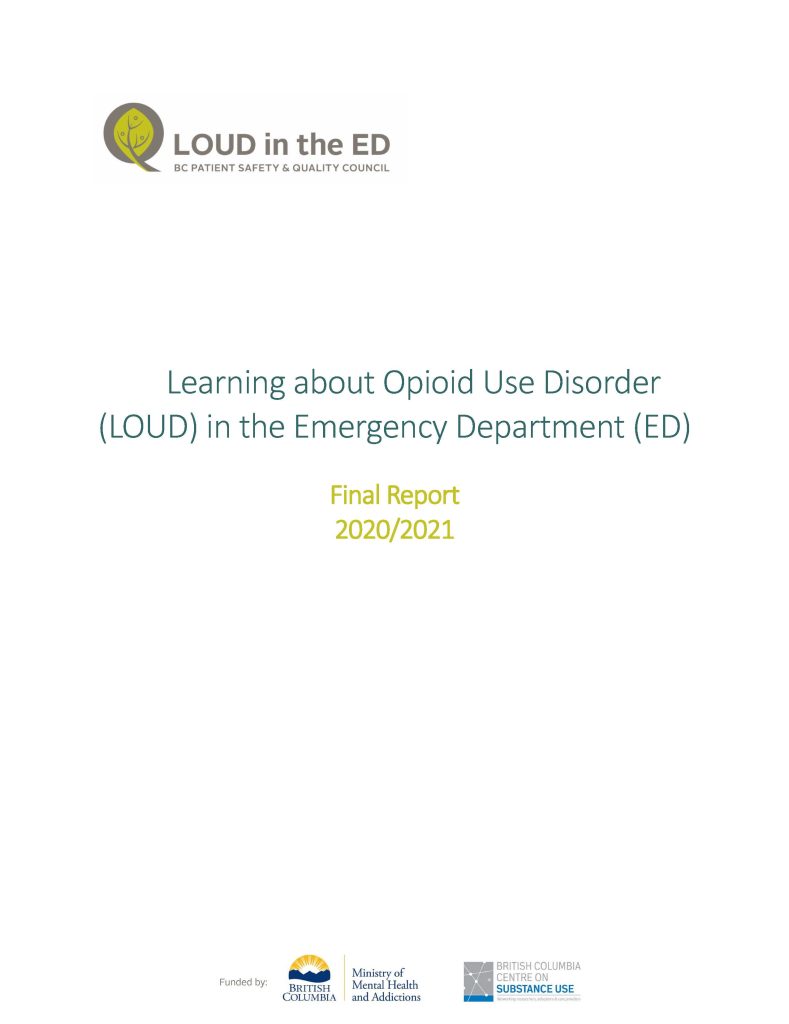Learning about Opioid Use Disorder (LOUD) in the Emergency Department (ED) was a provincial quality improvement initiative focused on ED care for people who use opioids. We led this initiative in partnership with the Overdose Emergency Response Centre and the BC Center on Substance Use to shift how emergency departments care for people who use opioids.
This virtual Action Series included a combination of virtual learning, coaching, networking and local improvement actions from October 2020 – March 2021. Twenty-five teams from across the province engaged in learning and application of change ideas related to clinical practice, education, person- and provider-centred care and connections to the community. Participating teams also engaged with each other to share new learning and insights from their local improvement work. We are now delivering a second iteration of LOUD in the ED in the summer of 2024 – 2025— learn more now!
Check out some of the informative resources below to guide you and your team on your improvement journey!
Getting Started
This resources page is full of links, documents and online training to support your quality improvement journey to improve OUD care in the ED. In consultation with the LOUD in the ED Faculty, four main drivers for improvement were identified and each Action Period focuses on one of those drivers. Read the full LOUD in the ED driver diagram or click on any Action Periods below to see all related recordings and resources.
Action Periods
LOUD in the ED Action Period 1: Recommended Clinical Decision Support Tools
LOUD in the ED Action Period 2: Clinical Education and Strategies
LOUD in the ED Action Period 3: People- and Provider-Centred Care
LOUD in the ED Action Period 4: Connection Continuum
LOUD in the ED Action Period 5: Celebration & Wrap-Up
Opioid Use Disorder Care in the Emergency Department Webinars
Co-presented by us and the British Columbia Centre on Substance Use, this series of care-based discussions explored ways to enhance care experiences for the treatment of people with opioid use disorder in the emergency department.
To help support busy emergency department care providers, check out preparatory online material with some of the foundations to providing quality care.
Just the Nuggets
Buprenorphine/Naloxone in the Emergency Department
Not Just Naloxone: Advancing a First Nations Perspective
Creating Safer Care Experiences
Learning About Opioid Use Disorder (LOUD) in the Emergency Department (ED) Final Report 2020/21
Language Matters
This interview was recorded with Andrew Kestler, Britt-Heidi Bailey, & Reija Jean (Peer Advocate & Vice-President BCAPOM), with support from the BC Patient Safety & Quality Council & LOUD in the ED.
Watch the full interview (18 min) with Reija and Britt or jump to:
- Q1. “Language matters” can mean different things to different people. What does it mean to you?(2:31)
- Q2. Can you give us an example when language used in an emergency visit had a negative impact on you or someone you know?(3:51)
- Q3. How about a time when it had a positive impact? (6:58)
- Q4. How can emergency doctors lead by example? (10:18)
- Q5. What terms do you find preferable for referring to substance use and people who use substances? (12:04)
- Q6. If you wanted emergency medicine staff to remember just one thing from this video, what would it be? (15:07)
Additional Tools & Resources
General OUD Care Resources
BCCSU List of Common Acronyms & Glossary
Opioid Agonist Treatment: General Information
Frequently Asked Questions about Opioid Agonist Treatment
Roles and Responsibilities: Supporting Clients on OAT
General Quality Improvement Resources
Culture Change Toolbox
A collection of tools and interventions for changing culture, each one accompanied by tips on how to apply it.
ATTIC: Activities for Transforming Teams & Igniting Change
ATTIC is a collection of activities that you and your team can use to build teamwork, develop communication skills, enable creative thinking and innovation, and help explore systems.
A Guide to Patient Engagement
This BCPSQC resource covers the essentials of patient engagement, how to prepare for it, where you can find patient partners and how to engage them.
Substance Use & COVID-19
Substance Use & COVID-19 Resources Check out this collection of resources for people who use drugs, providers and more collated by the BC Centre on Substance Use.
Risk Mitigation in the Context of Dual Public Health Emergencies This protocol is intended to provide clinical guidance to health care providers to support patients in the context of the COVID-19 pandemic and overdose crisis.
Ted Talk: Is Safe Supply a Viable Option for the Overdose Crisis? Guy Felicella advocates for harm reduction on behalf of British Columbia’s Overdose Emergency Response Centre, Vancouver Coastal Health’s Regional Addiction Team and the British Columbia Centre on Substance Use. He is also a LOUD in the ED Faculty member.
New Plan G Bridge Coverage & Applications
Plan G Bridge Coverage is now available to provide patients with faster, temporary Plan G coverage. Practitioners in emergency departments (EDs), Rapid Access Addiction Clinics (RAACs), urgent primary care centres (UPCCs), and correctional centres (both provincial and federal) can apply for Plan G bridge coverage, using a new section of the Plan G form. Practitioners can then send the form directly to Health Insurance BC instead of a mental health and substance use centre.
Plan G bridge coverage is provided to patients for 3 months, during which, to continue coverage, patients are to see a practitioner in their community to apply for regular Plan G coverage. This new process should provide patients who need immediate Plan G coverage with the coverage they need, and enough time to connect with a prescriber in the community to apply for regular Plan G coverage.
The new Plan G Application Form (to be used for regular, exceptional, and bridge Plan G coverage) is now available
A guide to Applying for Plan G Bridge Coverage to help explain the bridge coverage application process is available here.



